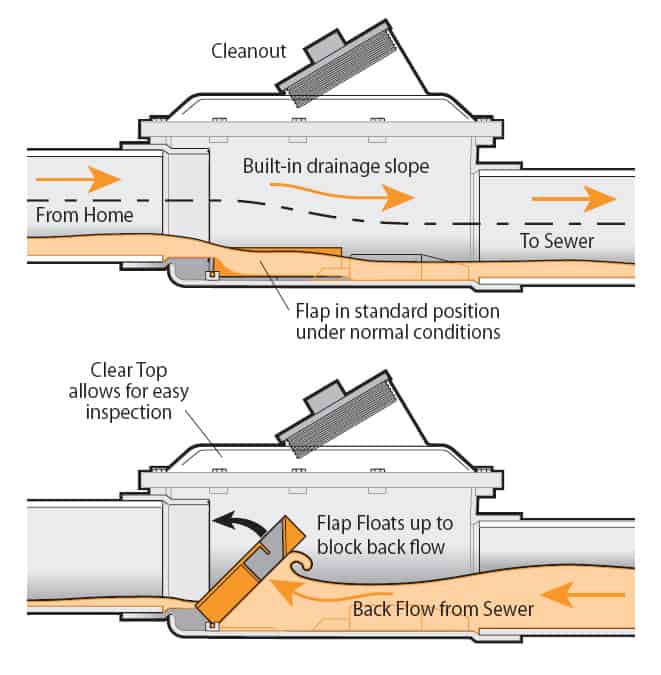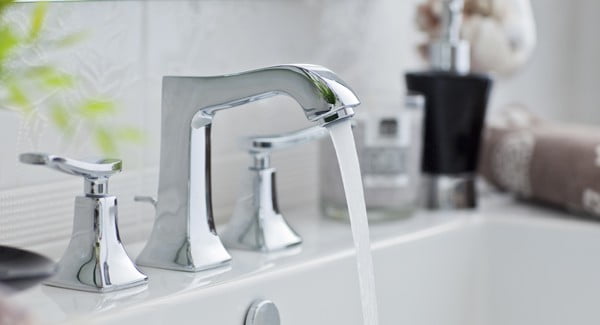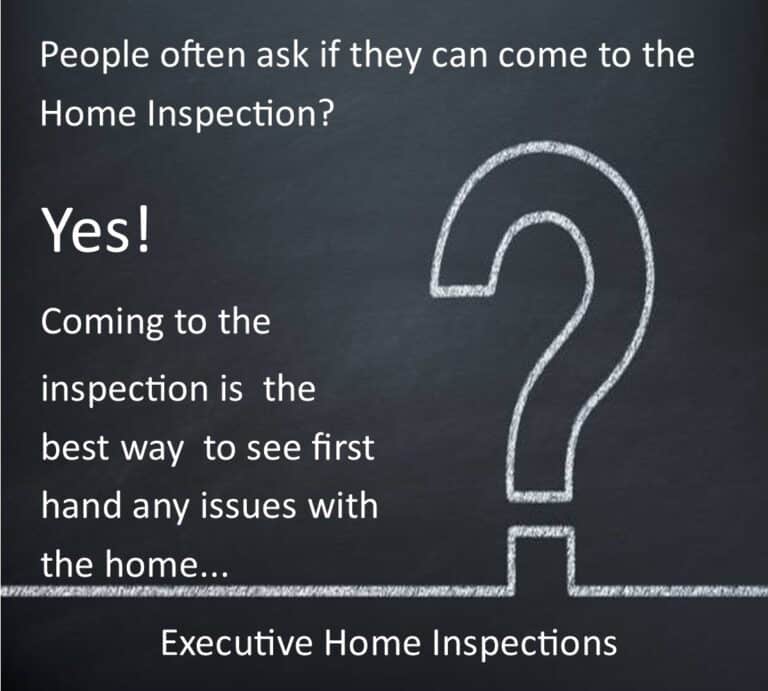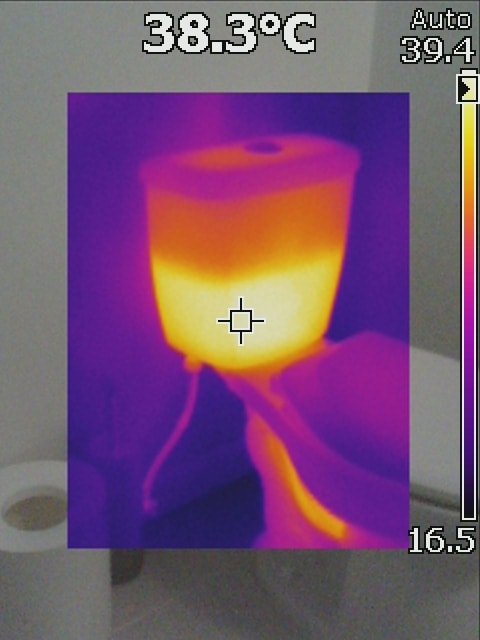
Seller Home Inspection Checklist
When selling your home, the home inspection can be intimidating so we’ve put together a comprehensive seller home inspection checklist.
As a home seller, you want to ensure that your home is in tip-top shape before putting it on the market. After all, first impressions matter! To help you out, we’ve put together a comprehensive home inspection checklist for sellers. From do-it-yourself repairs to hiring a professional home inspector. We cover everything you need to do to get your home ready for sale. So whether you’re getting ready to list your property or are already in the midst of selling, be sure to use this handy checklist as your guide. Good luck!
Consider Getting a Home Inspection
Before putting your home on the market, it is a wise decision to get a professional home inspection. This will give you an indication of any potential problems that need to be fixed, helping to sell your home faster and for a higher price. A Professional home inspector will check any visible faults and carry out an in-depth assessment of areas ranging from plumbing and electrical systems to insulation, roofing and drainage. Home inspectors provide you with your own inspection report. With their help, you can make sure all issues are sorted out before entering the market. Which could potentially ensure a speedy sale at your desired price point. The small expense of getting a home inspection could end up saving you time and money further down the line. Be sure to invest in one!
Prior to Inspection Day
Before the day of the home inspection, there are a few things you will want to take care of.
Utilities on
Ensuring utilities are on for the home inspection is a critical part of the process. It’s vital that utilities such as water, gas, and electricity are working so the inspector can complete their duties properly. The home inspector needs to check that all appliances and systems in the home are safely functioning and will need to test water fixtures on or off, testing plumbing pipes under pressure, and operating lights, fans, outlets and switches. Prior to a home inspection be sure to let your real estate agent know that all utilities are on.
Pilot lights
During a home inspection, pilot lights play a critical role in the safety and functionality of your home. Most gas furnaces and water heaters require a pilot light to be lit in order to safely operate. As part of the home inspection, a home inspector will check the appliances make sure they are functioning properly. If you have a gas furnace and water heater, be sure to check them yourself before your inspection. Doing so can help provide for a smooth inspection process by appeasing condition requirements, as well as offering peace of mind knowing that your pilot lights are properly functioning.
Trim Vegetation
Taking the time to trim back any overgrown vegetation is a quick and easy way to prepare your home for an upcoming inspection. It’s essential to trim away any branches or plants that may obstruct access to doorways and windows so they can be inspected. Plants such as shrubs and trees should be cut away from walkways, the roofline, and foundation of your home so that all angles can be safely inspected for potential issues or defects. Make sure to trim vegetation before your home inspection for a smoother and safer process.
Shovel Snow
During wintertime, shoveling away any snow that might be blocking access to your home prior to the inspection. This can be especially important if you may be actively trying to sell or rent out your home. A shoveled area can make all the difference for those viewing a house during a home inspection or open house. So don’t forget this helpful tip: shovel away any snow covering the entrance to your home!
Note: The Home Inspector does not shovel driveways, sidewalks or roofs as part of the home inspection.
Fix things
Before your home inspection, it’s a good idea to fix any obvious problems that you can fix yourself. This includes minor things such as dripping faucets, loose door knobs and creaky floorboards. Taking care of these items beforehand will help make sure that the home inspection goes more quickly and smoothly, and give your house the presentation it deserves. Even just a few minutes spent identifying and repairing small issues in the house could potentially prevent bigger ones from becoming apparent during the home inspection. Thus, if you’re looking to get your home ready for an inspection, taking some time to check for any fixable issues is always a good idea.
Check for leaks under the sinks
The importance of checking for potential leaks in and around the home cannot be stressed enough. Not only can they cause water wastage, but they can also wreak havoc on the surrounding area through structural damage and mold growth. Begin by looking at the sink area itself; if there is standing water around the pipes or drainage hole, then you may have a leak. Feel around the edges of the sink – if it seems damp there’s a good chance a pipe has cracked or split. Next, you should inspect any visible pipes in nearby cupboards; look out for damp areas as this could indicate a breakage further along. Finally, if possible, follow the path of an external pipe such as outside to see if there are any pools of water forming or obvious wet patches.
Provide access to all areas
When you’re preparing for a home inspection, it is important to provide clear access to all areas of your home. This involves ensuring that all processional areas are free from clutter and debris, that any inaccessible items have reasonable explanations or that entrances, hallways, and closets provide enough room for an inspector to examine safely. On the day of the inspection, you should provide easy access for the home inspector to all rooms including outdoor sheds, attics or basements. Home inspections provide crucial information about the condition of your home prior to purchase and helping provide inspectors with access will ensure they provide full coverage in their report.
On the day of the home inspection, make sure to give inspectors clear access to all areas of your property. This includes:
- Attic (house and garage)
- HVAC (furnace, AC etc.)
- Hot water heater
- Electrical panel and sub-panels (house and garage)
- Crawl space
- Sump pump
- Backwater valve
- Appliances, etc.
Test Smoke Alarms & Carbon Monoxide Detector
Prior to a home inspection, it is important for the homeowner to test their smoke alarm and carbon monoxide detectors to ensure they are functioning properly. If the test shows that either device needs new batteries, these should be replaced immediately. This can avoid an unexpected surprise during the inspection and help protect the safety of your family by making sure you are alerted in case of any potentially dangerous fire or gas leaks. Taking a few moments to test these alarms before your inspector arrives can make all the difference.
Test remotes
When you prepare for your home inspection, be sure to test that all garage door openers and ceiling fan remotes are working properly. If the remotes no longer seem to be operational, it is best to replace them before the inspector arrives. That way, you can avoid any last minute surprises or stress during the inspection day. Making sure these items are up and running ahead of time can help ensure that your inspection goes off without a hitch!
Test doors and windows
It’s always best to check that all doors and windows are in working order. While it’s easy to overlook, checking the functionality of your doors and windows is an important aspect of home maintenance. Whether they’re standard wooden doors or modern metal- and glass-paned sliding ones, you should routinely test all of your entryways to make sure that they open and close easily, without needing too much force. Make sure to take a few moments every season or two in order to check that all of your home’s openings operate as intended.
Test Appliances
When it comes to appliances, making sure they are in good working order is essential. Over time, appliances start to wear down and eventually need to be replaced or repaired. Appliances such as refrigerators and heaters require regular maintenance and repair in order to keep them running efficiently and safely. In addition, newer appliances often come with improved energy-saving features, making them much more efficient than their older counterparts. If you are considering purchasing a new appliance, make sure that it is up-to-date with the latest safety standards and certified by the appropriate agency. Another thing to consider is whether the appliance comes with a warranty or not; this can be very helpful in case something goes wrong down the line. By taking these precautionary measures, you can rest assured that all of your appliances will be running smoothly for years to come.
Change furnace filter
As a homeowner, you know it is important to change the filter in your furnace. And make sure any other HVAC components are kept clean for optimal performance. Failing to do so can lead to costly repairs down the line. Not to mention decreased air quality in your home due to dust and debris buildup. Furthermore, neglecting the upkeep of HVAC components can result in significant renegotiation after a home inspection.
Clean the house
You’d be surprised at how many sellers don’t take the time to clean the home prior to the inspection. Take a few minutes and put away clutter and make sure their entire home is clean before their home inspection. A messy or dirty home may give a negative impression to the home buyer, who usually attends the home inspection. It can give the impression the home has not been well maintained to the home inspector.
Make plans to be gone
This is perhaps the most important part of preparing for a home inspection. The inspector needs free access to all areas of your home, so it’s best that you are not present during the inspection. Inspections usually take 3-4 hours for a standard size home. Make plans to be out of the house while they complete their work. This will also help keep you from getting too emotionally involved with the process and allow you to take an objective look at any issues or problems that may arise. Schedule a time for when you and your family can be out of the house for 3-4 hours.
Inspection Day
On the day of the home inspection, there are a few things you will want to take care of.
Leave notes for any broken items
When it comes time for home inspection day, there are certain extra steps you can take to ensure any potential issues are easily visible and understood by the inspector. Leave notes pointing out any broken items around your home along with the necessary instructions for repair or replacement. Not only is this helpful in making sure the inspector notices all areas of concern. But it also shows that you are mindful and thorough in presenting your home to potential buyers. Leaving notes could make a big difference when selling your home and drastically improve the chances of a successful home inspection.
Leave repair receipts and permits
On the day of inspection it is important to leave relevant paperwork and documents in order to prove the repairs have been completed correctly. Leave repair receipts and permit documentation in an easily accessible place so that the inspector can quickly locate them. Having these items available will make it smoother and more efficient, resulting in a better understanding of the condition of your property. This can help expedite the process once the inspection is complete, giving you a better outcome for your investment.
Leave keys and remotes
On home inspection day, one of the most important tasks you can do as a homeowner is to leave keys and remotes where they can be easily found. If the inspector doesn’t have access to these things, it could lead to costly delays, or even an additional fee for an unscheduled visit. Leave all relevant keys and remotes in a visible spot that is easy to access. This way, the inspector will be able to move quickly and efficiently through the property without any interferences.
Empty the Oven, Dishwasher, Sinks, Washer, and Dryer.
The appliances should be empty so that your inspector can get a good look at their condition. Remove baking pans and cooking sheets – these should be removed during an inspection of the appliance. Empty the dishwasher of any dishes, cleaning supplies and water softener tablets. Empty each sink basin and check for drain obstructions. Make sure your washer is drained of all excess water, detergent and fabric softener. Lastly, make sure your dryer is completely empty with no clothes left inside or lint left in the lint trap.
toilets, garbage’s and pets
It is important to make sure you have flushed the toilets, emptied garbage cans, and taken care of any messes from your pets. This includes scooping out cat litter boxes and picking up pet waste in the yard. Properly addressing these items will demonstrate that you are a responsible homeowner who takes good care of their property. This may even increase your home’s value in the eyes of potential buyers.
Move vehicles
On home inspection day, it’s important to remember to move any vehicles away from the house and driveway. This will give the inspector ample room to navigate the property and get a full understanding of its condition. Move vehicles to an area where they won’t obstruct or block access such as a nearby street or parking lot. Doing so will ensure that nothing prevents the inspector from completing their work thoroughly and efficiently.
Take pets with you
One key detail to keep in mind when preparing for home inspection day is the presence of pets. The best course of action is to either take any pets with you or crate them. This is so that they don’t disrupt the inspection process. It’s important not to leave them locked in one room, such as a bedroom, during the home inspection. That room will then not be inspected by the inspector and could pose a problem down the line. Take time to plan ahead and ensure your beloved animal friends are kept safe on home inspection day!
Leave before the inspection starts
On home inspection day, it is important for homeowners to leave 15-30 minutes before the inspection starts. Many inspectors will begin their inspections on the exterior of the home while waiting for the client. It’s important that you be ready when they arrive. So, remember – homeowner Leave 15-30 minutes before your scheduled home inspection to help make sure that it goes smoothly.
Conclusion
As the seller, it is important to understand the home inspection process and what follows it. Knowing what to expect and having a seller home inspection checklist can help you prepare for inspection day. Having thigs fixed prior to the home inspection will show the buyer you are dedicated homeowner. A seller home inspection checklist can help ensure a smooth experience for everyone involved throughout the entire process.
Learn More
Click here to learn more about the entire home inspection process.





